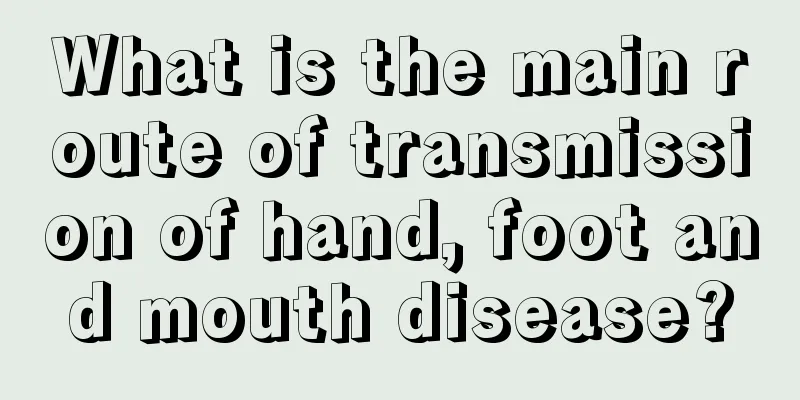What is the main route of transmission of hand, foot and mouth disease?

|
Different diseases are prevalent in different groups. Some epidemic diseases are mainly concentrated in children. Hand, foot and mouth disease is such a disease, and it spreads very quickly, causing symptoms such as fever and vomiting. Let's take a look at the main transmission routes of hand, foot and mouth disease. Hand, foot and mouth disease is an infectious disease in children, also known as exanthematous vesicular stomatitis. It mostly occurs in children under 5 years old and can cause herpes on the hands, feet, mouth and other parts of the body. A small number of children may develop complications such as myocarditis, pulmonary edema, and aseptic meningoencephalitis. In some seriously ill children, if the disease progresses rapidly, it may lead to death. The main clinical symptoms of this disease are herpes or ulcers formed after rupture of the hands, feet and oral mucosa. Hand, foot and mouth disease is an infectious disease caused by enterovirus. There are more than 20 types of enterovirus that can cause hand, foot and mouth disease, among which Coxsackievirus A16 and enterovirus 71 are the most common. The main routes of transmission of hand, foot and mouth disease are: Close contact with people It is an important mode of transmission. Children are infected by contact with hands, towels, handkerchiefs, cups, toys, eating utensils, milk utensils, bedding, underwear, etc. contaminated with the virus. Secretions The virus in the patient's throat secretions and saliva can be transmitted through the air (droplets), so close contact with sick children can cause infection. diet Infection can also occur by drinking or eating water or food contaminated by the virus. The above are the main ways of transmission of hand, foot and mouth disease. In order to avoid the spread of hand, foot and mouth disease, we need to put the above information into daily life and avoid contact with patients with hand, foot and mouth disease. Secondly, we must develop good living habits, take a bath and change clothes frequently to avoid the growth of bacteria. |
<<: What to do if hand, foot and mouth disease recurs
>>: What to do if your child has itchy eyes
Recommend
How to deal with the placenta of a newborn
The placenta is an important transitional organ f...
Early symptoms of varicella encephalitis
Newborn babies have very weak resistance and if t...
What to do if your one-year-old baby is zinc deficient
Everyone's body contains various elements, zi...
What are the baby's development indicators at one and a half weeks?
What are the baby's development indicators at...
Two-year-old baby's head bone protrudes
As children grow, problems are more likely to occ...
What to do if your child has poor digestion and diarrhea
Children's resistance is relatively low, so t...
Children who eat too much meat are prone to spleen yin deficiency
Traditional Chinese medicine believes that the sp...
What kind of milk powder should babies with anemia drink?
When it comes to choosing milk powder for their b...
How to educate naughty children
It is the nature of children to love playing, so ...
What is the situation when the baby has red spots on his back like prickly heat?
What happens when red spots like prickly heat app...
What is phimosis in children and what are the causes
Many children have encountered the phenomenon of ...
Can a 1-year-old baby eat bird's nest?
Children’s health is often what parents are most ...
My baby has a stuffy nose at night but nothing happens during the day. What's going on?
It is quite common for babies to have nasal conge...
Is it a calcium deficiency if a child sweats on his head while sleeping?
Many parents will say that their babies often swe...
Why are my child's hands and feet yellow?
When children's hands and feet turn yellow, m...









